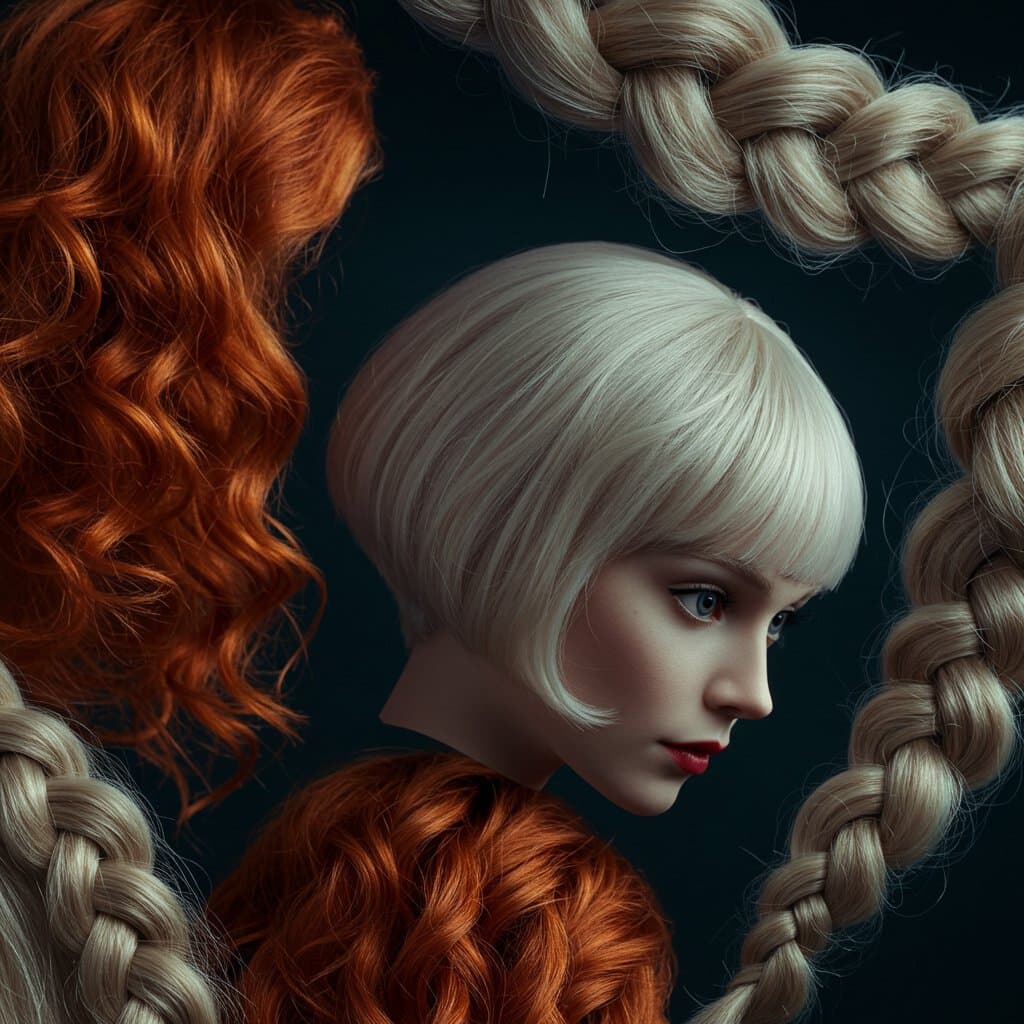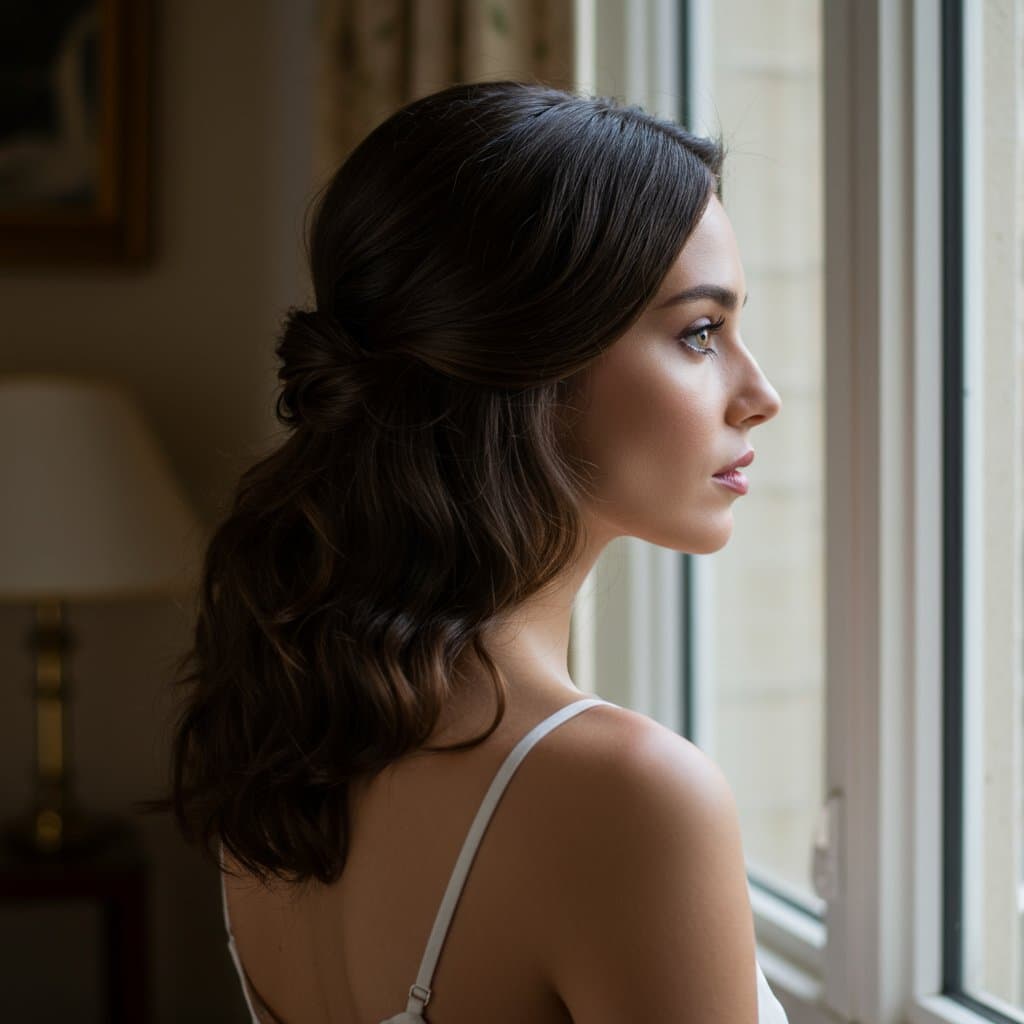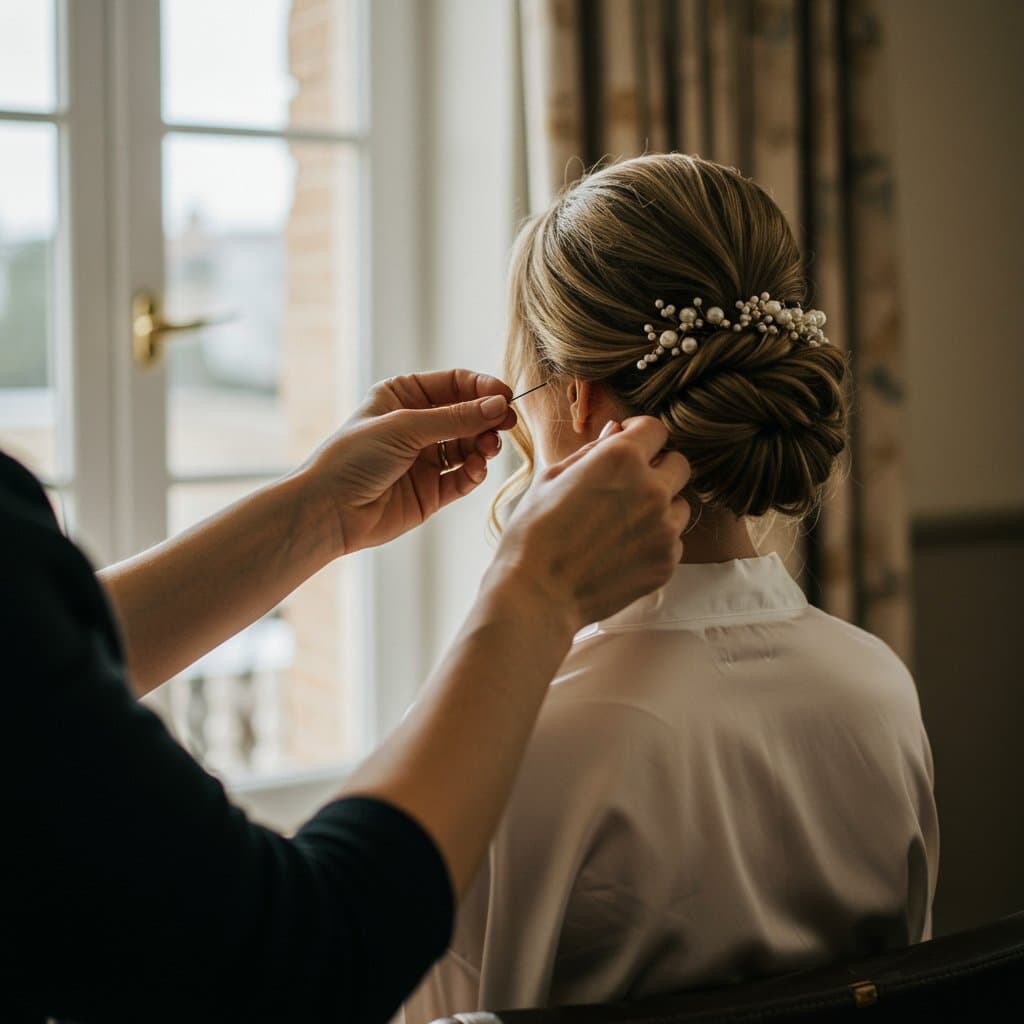
Predicting the Woman Hairstyles of the Future: 7 Trends Shaping the Next Decade | Tech & Sustainability
12 min read

12 min read

12 min read

14 min read
Download our app to instantly see how you'd look with any hairstyle or color
Get the App
12 min read

13 min read

11 min read
Download our app to instantly see how you'd look with any hairstyle or color
Get the AppCinema has a unique power to transport us to different worlds, introduce us to unforgettable characters, and define cultural moments. While dialogue, costume, and cinematography play crucial roles, a character's hairstyle is often the silent storyteller. It can signify rebellion, sophistication, vulnerability, or power in a single glance. The most iconic movie hairstyles do more than just complement a character; they become characters in their own right, transcending the film to influence fashion, beauty, and salon requests for decades. These are the styles that are instantly recognizable, endlessly emulated, and forever etched in our collective cultural memory.
From the meticulous updos of Hollywood's Golden Age to the edgy, textured looks of modern blockbusters, film has provided a rich tapestry of hair inspiration. These styles are not just fleeting trends; they are historical artifacts that capture the essence of an era. They inspire us to be bold, to experiment with our look, and to understand the transformative power of a great haircut. This exploration delves into the stories behind the most iconic movie hairstyles of all time, examining their construction, their cultural impact, and why they continue to captivate audiences and inspire stylists around the world. Get ready to journey through cinematic history, one unforgettable hairstyle at a time.
---
The Golden Age of Hollywood was a masterclass in glamour and precision, and its hairstyles were no exception. This era was defined by meticulously coiffed looks that radiated sophistication and poise. These styles weren't just about looking beautiful; they were about creating an aspirational image of perfection that captivated audiences and set the standard for formal elegance for years to come. The techniques were complex, requiring immense skill from studio hairdressers who were artists in their own right.
When you think of iconic movie hairstyles, Audrey Hepburn as Holly Golightly in Breakfast at Tiffany's (1961) is almost certainly the first image that comes to mind. Her high chignon, a variation of a French twist, was the epitome of effortless grace. Paired with her little black dress and pearls, the hairstyle cemented a look that is synonymous with timeless chic. It was sophisticated yet playful, perfectly capturing Holly's complex character. The style features a smooth, high crown with elegantly swept-back sides, culminating in a polished, intricate bun. The addition of a small tiara accessory showcased the hairstyle as a perfect canvas for embellishment.
The influence of this updo cannot be overstated. It immediately became the gold standard for formal events, weddings, and proms. What made it so revolutionary was its blend of high-fashion structure and accessible elegance. It demonstrated that a hairstyle could be both elaborate and understated. Decades later, stylists in professional hair salons continue to receive requests for the "Holly Golightly updo." It has been reinterpreted countless times on red carpets and in fashion editorials, proving that true style never fades. Its legacy lies in its versatility and its power to bestow instant sophistication on the wearer.
---
As Hollywood's Golden Age gave way to new cultural movements, hairstyles on screen began to reflect a growing spirit of rebellion and individuality. The perfectly sculpted waves of the 40s were replaced by looks that challenged convention and represented a break from the past. These new styles were less about polished perfection and more about attitude, becoming symbols of the burgeoning youth culture that was reshaping society.
In Rebel Without a Cause (1955), James Dean's hair was as central to his character as his red jacket. His textured, slightly disheveled pompadour was the antithesis of the neat, conservative hairstyles worn by the previous generation's leading men. It was a look that required product—specifically pomade—to achieve that signature height and hold, yet it was meant to look effortlessly cool. The style, often referred to as a "greaser" look, was adopted by young men worldwide as a symbol of non-conformity and cool detachment. It was more than a hairstyle; it was a statement against the establishment.
Across the Atlantic, Jean-Luc Godard's Breathless (1960) introduced the world to Jean Seberg and her revolutionary pixie cut. In an era where long hair was the established norm for feminine beauty, Seberg's gamine, ultra-short crop was a radical statement. It was bold, chic, and unapologetically modern. The cut stripped away artifice, highlighting her facial features and projecting an image of intelligence and independence. The à la garçonne style became an instant sensation, embodying the spirit of the French New Wave and inspiring women to embrace short hair as a powerful form of self-expression. It paved the way for other iconic short cuts, like Mia Farrow's in the later part of the decade.
---
Genre films have always provided a canvas for imagination, and this extends to hairstyling. The worlds of science fiction, horror, and fantasy have given us some of the most creative and unforgettable looks in cinematic history. These styles are often not bound by the rules of reality, allowing for shapes, structures, and concepts that become instantly iconic and emblematic of the fantastical worlds they inhabit.
Few hairstyles are as instantly recognizable as Princess Leia's "cinnamon bun" side buns from Star Wars: A New Hope (1977). This sculptural, symmetrical look was unlike anything audiences had seen before. Director George Lucas was inspired by early 20th-century Mexican revolutionary women, wanting a style that was not tied to any current fashion trend, thus making it feel timeless and otherworldly. The buns are a marvel of hair engineering, perfectly framing Carrie Fisher's face and projecting an image of regal authority and strength. The style became a cultural phenomenon, a go-to for costume parties, and a symbol of one of cinema's most beloved heroines.
While Jean Seberg pioneered the pixie, Mia Farrow took it to a new, dramatic level for Rosemary's Baby (1968). The haircut, famously executed by the legendary Vidal Sassoon, was a major plot point in the film, symbolizing her character's loss of identity and growing vulnerability. The extremely short, boyish crop was a stark departure from the softer styles of the 60s and created a media frenzy. It was a powerful example of how a haircut can drive a narrative and define a character's entire arc. The "Rosemary's Baby pixie" remains a benchmark for daring, transformative haircuts, representing a total shearing away of the past.
---
The 1990s were a decade of contrasts, and its cinematic hairstyles reflected this duality. On one hand, there was a move towards gritty realism and minimalist cool, while on the other, a celebration of glamorous, larger-than-life texture. This era gave us sharp, geometric cuts that oozed attitude, as well as a return to embracing natural, voluminous hair.
Quentin Tarantino's Pulp Fiction (1994) is a masterwork of cool, and no element is cooler than Mia Wallace, played by Uma Thurman. Her hairstyle—a severe, jet-black bob with razor-sharp bangs cut straight across her brow—is as iconic as the film itself. The look was sleek, dangerous, and impossibly chic. It drew inspiration from silent film stars like Louise Brooks but was updated with a modern, graphic edge. The Mia Wallace bob sparked a massive trend for sharp, angular bobs and proved that a simple, well-executed cut could be more impactful than the most elaborate style. It remains a go-to look for anyone wanting to project an aura of mysterious confidence.
At the start of the decade, Pretty Woman (1990) introduced the world to Julia Roberts' magnetic smile and her equally captivating mane of auburn curls. In an era that was still shaking off the stiff, hairsprayed styles of the 80s, her character Vivian's wild, untamed curls felt fresh, liberating, and joyfully natural. The hairstyle celebrated texture and volume in a way that felt both glamorous and approachable. It inspired a generation of women to put down their straighteners and embrace their natural waves and curls. Achieving this look required the right products to enhance definition and fight frizz, making curl-enhancing creams and mousses household staples.
---
As we moved into the 21st century, iconic movie hairstyles continued to evolve, reflecting new ideals of strength, practicality, and individuality. The modern classics are often less about high-maintenance glamour and more about expressing character in a way that feels authentic and powerful. These styles are not just fashionable; they are functional, often telling a story about the character's journey and capabilities.
Halle Berry had been rocking her signature pixie cut for years, but her role as Jinx in the James Bond film Die Another Day (2002) catapulted it to iconic status. As a Bond girl, she defied the long-held tradition of flowing, traditionally feminine locks. Her spiky, textured pixie was modern, sexy, and practical for an action hero. It perfectly framed her face and projected an image of confidence and self-assurance. The look became synonymous with Halle Berry herself and inspired countless women to make the chop, proving that short hair could be unequivocally glamorous and powerful.
The Hunger Games (2012) gave us a new kind of heroine in Katniss Everdeen and a new iconic hairstyle: her signature side braid. The Dutch braid was, first and foremost, practical—it kept her hair out of her face during combat. But it quickly became much more than that. The Katniss braid became a symbol of her resilience, strength, and defiance against a dystopian regime. It was a hairstyle that was both beautiful and functional, sparking a worldwide trend for intricate braids. Girls everywhere were learning to Dutch braid, and the style became a go-to for both everyday wear and formal occasions, celebrated for its elegant yet powerful aesthetic.
---
Sometimes, the most memorable movie hair isn't about the cut, but the color. Bold, expressive hair color can be a powerful narrative tool, reflecting a character's inner emotional state, their personality, or even the passage of time. These styles push the boundaries of conventional beauty and celebrate hair as a canvas for artistic expression.
In Eternal Sunshine of the Spotless Mind (2004), Kate Winslet's character, Clementine Kruczynski, is a whirlwind of impulsiveness and emotion, and her hair is the ultimate visual cue for her state of mind and the film's scrambled timeline. From "Blue Ruin" to "Agent Orange," her hair color changes dramatically throughout the story, acting as a roadmap for the audience navigating the memories of her relationship with Joel. Clementine's vibrant, semi-permanent hair colors celebrated individuality and non-conformity. The film helped popularize "fashion colors" and positioned dyeing your hair as a profound form of personal expression, a way to wear your heart on your... head.
The genius of Clementine's hair is how it's woven into the fabric of the story. Each color corresponds to a different phase of her life and relationship. This use of color has influenced not just film, but the broader beauty industry. Professional salons now offer a vast spectrum of creative color services, allowing clients to express their personalities in vivid detail. Eternal Sunshine showed that hair color can be more than an aesthetic choice; it can be a part of your personal narrative, changing as you do.
---
Inspired by these cinematic masterpieces? Bringing an iconic movie hairstyle into the modern day is entirely possible with the right approach and professional guidance. Here are some tips for translating these screen-worthy looks into your personal style.
Before you commit to a drastic change like a Mia Wallace bob or a Halle Berry pixie, the most crucial step is a thorough consultation with an experienced stylist. Bring reference photos, but also be open to their professional advice. A good stylist will assess your hair type, texture, and face shape to determine how to best adapt the iconic look for you. They can suggest modifications that will make the style more flattering and manageable for your daily life.
Many classic styles can be updated with a modern twist. For example, a James Dean pompadour can be softened with less greasy products for a more natural, textured finish. An Audrey Hepburn-inspired updo can be made less rigid with a few face-framing tendrils for a romantic, contemporary feel. The key is to capture the essence of the style rather than creating a carbon copy. This could mean adding texture, playing with the length, or adjusting the parting to make it feel fresh and current.
The right products are essential for recreating and maintaining these looks. For sharp bobs, a smoothing serum and a flat iron are your best friends. To get voluminous curls like Julia Roberts, a curl-defining cream and a diffuser are must-haves. A strong-hold pomade or wax is necessary for a classic pompadour, while a texturizing spray can give a pixie cut that perfectly piecey look. For updos, a good foundation of mousse for volume and a firm-hold hairspray for longevity are non-negotiable.
---
1. Which movie hairstyle is the most requested in salons? While it varies, styles like the voluminous layers of Jennifer Aniston in Friends (though a TV show, its impact is cinematic) remain popular. From film, variations of Julia Roberts' curls in Pretty Woman and the classic Audrey Hepburn updo for formal events are consistently requested. Modern requests often center around looks that are both stylish and low-maintenance.
2. Can I pull off a pixie cut like Mia Farrow or Halle Berry? A pixie cut can work on many face shapes, but the key is tailoring the cut to your features. An experienced stylist can adjust the length of the bangs, create texture, and shape the sides to complement your bone structure. Confidence is the most important accessory for a short haircut!
3. How do I maintain a sharp bob like Mia Wallace's? A geometric bob requires precision and maintenance. To keep the lines sharp, you'll need regular trims every 4-6 weeks. At home, use a heat protectant and a quality flat iron to maintain the sleek, straight finish. A shine spray can add that glossy, polished look.
4. What's the best way to get voluminous curls like Julia Roberts in Pretty Woman? If you have natural curls, use a sulfate-free shampoo and a moisturizing conditioner. Apply a curl cream or mousse to damp hair and either air-dry or use a diffuser on low heat. If you have straight hair, you can achieve this look with hot rollers or a curling wand, making sure to use a volumizing spray at the roots and a flexible-hold hairspray to finish.
5. Are bold hair colors like Clementine's high-maintenance? Yes, vibrant fashion colors require significant upkeep. They tend to fade faster than natural shades, so using color-safe, sulfate-free shampoos and washing with cool water is essential. Regular touch-ups and deep conditioning treatments are needed to maintain the vibrancy and health of the hair, which is often pre-lightened to achieve the brightest results.
6. How can I recreate Princess Leia's buns for a costume party? For Princess Leia's buns, you'll likely need some help. You can use sock buns or hair donuts as a base. Part your hair down the middle into two ponytails placed over your ears. Pull each ponytail through a hair donut, spread the hair to cover it, and secure the ends with pins. Hairspray is essential to keep everything in place for a long night in a galaxy far, far away.
---
From Holly Golightly's elegant chignon to Katniss Everdeen's defiant braid, the most iconic movie hairstyles are far more than just aesthetic choices. They are powerful symbols woven into the cultural lexicon, representing moments in history, character evolution, and artistic expression. These looks have inspired trends, pushed boundaries, and given us new ways to envision ourselves. They remind us that hair is a deeply personal and transformative tool for storytelling, both on the silver screen and in our own lives.
The enduring appeal of these styles lies in their ability to capture a specific feeling or attitude that still resonates today—be it rebellion, sophistication, or strength. As you consider your next style, perhaps you'll draw inspiration from one of these cinematic legends. By working with a talented stylist, you can reinterpret these classic looks to write your own iconic story, one haircut at a time.
Download our app to instantly see how you'd look with any hairstyle or color
Get the App
12 min read

12 min read

14 min read